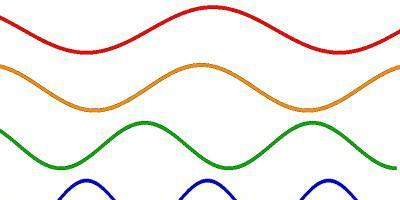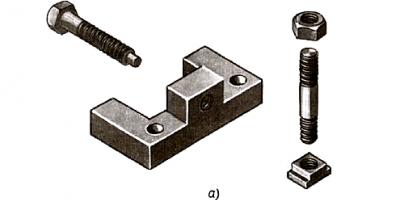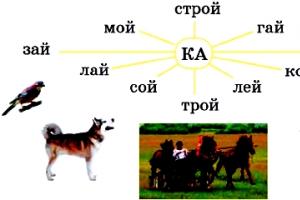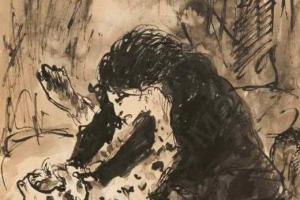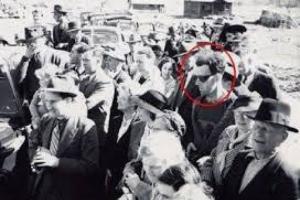When learning a language, several tasks are solved simultaneously: it is necessary to master the correct pronunciation of words, acquire speech skills, thanks to which you can freely express your thoughts, and learn to write.
To avoid difficulties associated with spelling, you should distinguish between oral and written speech. And to do this, you need to understand how sounds differ from letters.
Sounds represent a wave vibration that is perceived by human hearing in a certain range. Of the huge variety of sounds, there is only a small part that we can reproduce in the form of speech.
It is this part that makes up the phonetic structure of the language. It consists of sounds that are divided into vowels and consonants, distinguished by the method of formation, sonority and deafness, hardness and softness. To record sounds in the form of words, a special sign system is needed. Graphic representations of sounds are letters. They are perceived visually and cannot sound.
The letter composition of a language is called the alphabet. The Russian alphabet consists of 33 letters. Ten of them indicate vowel sounds, 21 letters serve to graphically represent consonants, and the letters b b do not have an independent sound expression.
ImGist determined that the differences between letters and sounds are as follows:
The wave nature of sounds makes it possible to hear and reproduce the minimal indivisible sound units that make up the speech stream. Unlike sounds, it is impossible to pronounce or hear a letter.
Letters are graphic representations of sounds. Fixed in the sign system, sounds take the form of written speech.
The phonetic appearance of a word can fully correspond to its graphic image, for example: table - [table]. However, in the Russian language such a correspondence is quite rare due to the fact that its sound structure consists of 44 units, and its alphabet consists of 33 letters.
Read also:
Charming crumbs - microbes and bacteria - can cause the death of a much larger and more developed living creature. But it is precisely this “trifle” that is a necessary condition for a number of processes, without which...
Solids are metals, semiconductors and dielectrics. They differ from each other in their electronic properties. The electrical conductivity of solids is determined by the properties of electrons. What are semiconductors and metals? Semiconductors are...
Inorganic catalysts and enzymes (biocatalysts), without being consumed themselves, accelerate the course of chemical reactions and their energy capabilities. In the presence of any catalyst, the energy in a chemical system remains constant. In the process of catalysis, the direction...
When learning a language, several tasks are solved simultaneously: it is necessary to master the correct pronunciation of words, acquire speech skills, thanks to which you can freely express your thoughts, and learn to write.
To avoid difficulties associated with spelling, you should distinguish between oral and written speech. And to do this, you need to understand how sounds differ from letters.
Sounds represent a wave vibration that is perceived by human hearing in a certain range. Of the huge variety of sounds, there is only a small part that we can reproduce in the form of speech.
It is this part that makes up the phonetic structure of the language. It consists of sounds that are divided into vowels and consonants, distinguished by the method of formation, sonority and deafness, hardness and softness. To record sounds in the form of words, a special sign system is needed. Graphic representations of sounds are letters. They are perceived visually and cannot sound.
The letter composition of a language is called the alphabet. The Russian alphabet consists of 33 letters. Ten of them indicate vowel sounds, 21 letters serve to graphically represent consonants, and the letters b b do not have an independent sound expression.
TheDifference.ru determined that the difference between letters and sounds is as follows:
The wave nature of sounds makes it possible to hear and reproduce the minimal indivisible sound units that make up the speech stream. Unlike sounds, it is impossible to pronounce or hear a letter.
Letters are graphic representations of sounds. Fixed in the sign system, sounds take the form of written speech.
The phonetic appearance of a word can fully correspond to its graphic image, for example: table - [table]. However, in the Russian language such a correspondence is quite rare due to the fact that its sound structure consists of 44 units, and its alphabet consists of 33 letters.
1. Name the letters correctly.
- What sound does each letter represent? What do you know about the sounds [i] and [th"]?
- Choose and write words that contain these letters.
2. . Read it. What are the similarities and differences between each pair of highlighted words?
A bee flew out of the hive Roy. Swarms midges circled above the wave.
Parrot- a bird with bright and motley plumage. Tamed parrots can pronounce words.
- Is the number of syllables in the words of each pair the same? swarm - swarms, parrot - parrots? Explain your answer.
- Write down the words with the letter “and short”. Underline the syllable with this letter in the words.
Pay attention! Sound [th"] is a consonant sound. Without a vowel sound it does not form a syllable.
3. “Collect” words from syllables.

- Why are these words interesting? Explain the meaning of each word. Write three words.
- Which word is ambiguous: three-piece or T-shirt?
d e zhurny
4. Read the combinations of words.
Russian...language, diligent student, cowardly for..ts, d..classroom recorder, new p..cash, black k..r..ndash, good teacher, small v..r..beat.
- Explain which letters are missing in the words. Write down three combinations of words.
- Match the highlighted words with words that are opposite in meaning.
5. Read it. Pay attention to the hyphen in each word.
- Is the letter “and short” separated from the previous letter when words are hyphenated?
- Draw a conclusion: how to move words with a letter from one line to another th?
- Write down any two words, separating them with a horizontal line for hyphenation.
6. Look at the pictures. Read the words.
fluffy prickly
- Match the pictures and words. Who and what can be said about barbed? fluffy?
- Make up a sentence with any word. Write it down.
Vowels are sounds that, unlike consonants, occur during the formation of a tone - without the participation of noise. In addition, unlike consonants, vowel sounds are capable of forming a syllable and participating in the formation of stress. It must be said that there are languages where some consonants, mainly sonorant consonants, can form a syllable (for example, in Czech: vlk - wolf). Vowel sounds in the Russian language are very important: in addition to participating in the distinction of meaning, they are supporting for us in determining the rhythmic structure of a word and its boundaries.
In the Russian language, vowel sounds perform the following functions: they participate in the construction of words, they can distinguish words, create rhythm - form stress, participate in the formation of intonation (including emotional - ““How she floats!” - we say when we want express your especially warm attitude). Vowel sounds in the Russian language are the most intense and can change their duration over a very wide range, unlike most consonant sounds. Acoustically, vowel sounds differ from consonants by significantly greater total energy of pronunciation. This feature - the total energy of pronunciation - is important not only for vowels, it also allows us to distinguish among consonant sounds a special class of sonorant sounds, or sonants. Sonants occupy an intermediate position in terms of the total energy of pronunciation between vowel sounds and other (non-sonorant) consonants - plosives, noisy and affricates. Compare the sound of words with maximum contrast in intensity between consonant and vowel sounds (voiceless plosives + vowels) and words with minimal contrast (these words consist of vowel sounds and sonants).
The basis of vowel sounds is tone. The harmonic nature of tonal sound is important for speech - harmonic vibrations are distinguished by a high level of energy, and also by the fact that the sound energy is distributed fairly evenly across the entire acoustic spectrum, thereby the sound becomes resistant to various types of natural noise, which in most cases are localized in a limited spectral region . Therefore, vowel sounds are clearly audible and can be stretched out in duration (when lost in the forest, we call “au-oo-oo!”); they can be quite short, but still retain their intensity. This property of vowel sounds provides the possibility of such a fundamental phonetic phenomenon for the phonetic system of the Russian language as the quantitative reduction of vowel sounds.
Vowel sounds in the Russian language vary by ear depending on the volume and shape of the resonators that are formed in the vocal tract as a result of changes in the position and shape of the tongue in the oral cavity, as well as depending on how the shape of the oral opening formed with the help of the lips changes the nature of the air stream leaving the mouth. However, the tongue, as the most mobile organ of articulation, is constantly busy in the production of other sounds - consonants (as well as the lips). Therefore, in the stream of speech, the volume and shape of the resonators are constantly changing due to coarticulation processes. And the subsystem of Russian vowel sounds (as well as consonants) cannot be established outside of their semantic-distinguishing capabilities within the framework of a single phonetic system of the language.
How do vowels differ from consonants?
There is no people on the entire Earth who do not have their own language. And every language consists of words, which in turn are divided into sounds. Without the ability to pronounce certain sounds, humanity would not have learned to speak.
There are 43 sounds in the Russian language, which are indicated by letters in writing. This kind of sound is very familiar to us. But you should know that every language in the world has a number of sounds that are characteristic only of one or another people. Sounds are vowel and unvowel.
Alternating with each other, they take direct part in word formation. Each type of sound has its own characteristics and performs its own functions. Languages differ from each other in the ratio of vowel and consonant sounds - so it is not strange that some peoples are characterized by such melodiousness, while others have speech structures that are difficult to pronounce.
Let's try to figure out how vowels differ from consonants.
Vowel sounds - their features
Vowel sounds are the category of speech that is formed with the help of passage of air through the vocal cords. They are created exclusively with the help of the voice, without third-party noise and without the participation of the articulatory apparatus. In the Russian language, as in many other Slavic languages, there are 6 vowel sounds, including [a], [e], [i], [o], [u], [s]. It is worth considering that there are ten vowel letters. This difference in quantity arises because the letters i, yu, e and ё consist of two sounds.

Vowel sounds play a very important role in word formation. First of all, they form syllables. There is no syllable without a vowel sound! Secondly, they give each syllable its own flavor, making it stressed or unstressed. The stressed syllable is pronounced much longer and more expressively than the others.
What are consonants?
Consonant sounds are sounds that are created under the influence of the vocal flow with the participation of the articulatory apparatus. When pronouncing a consonant sound, the voice encounters obstacles, which are the tongue or lower lip, and acquires a noisy tone. There are 36 consonant sounds in the Russian language. On the letter they are indicated 21 letters.
Consonant sounds have a clear classification. Depending on the degree of use of voice and noise, consonant sounds are:
Noisy ones, in turn, are divided into:

There are also soft and hard consonant sounds. Determining the type of sounds depends on pronunciation. Thus, soft ones are distinguished by the fact that they can be pronounced only by raising the middle part of the tongue up to the palate. The softness or hardness of a consonant depends on the sound that follows it. For example, if a consonant is followed by the vowels e, e, i, yu, i or ь, then it will in any case be characterized as soft. In addition, the letters ь and ъ, which do not represent sounds, indicate the softness of the previous consonant sound.
Differences between vowels and consonants
The first and most important difference between vowels and consonants is that the former are formed in the larynx, while others pass through the tongue and teeth, palate or lips. In order to master all consonant sounds, it is important that a person does not have speech apparatus deficiencies. To be able to pronounce vowel sounds you do not need special skills - they are formed by themselves (even babies pronounce vowel sounds easily).
The sounds also differ in that syllables are created through vowel sounds. The number of vowel sounds in a word indicates the number of syllables during phonetic analysis. Consonants, in turn, do not have such an ability.
Also, thanks to vowel sounds, words acquire expression and intonation. The accent mark is placed exclusively on vowel sounds, which gives a certain peculiarity to the stressed syllable.
Consonant sounds can be combined into pairs and, in combination with vowel sounds, prolong their sound. But despite all the differences, both vowels and consonants are an integral component of speech. Only by combining with each other are they able to create words, which, when combined, turn into sentences, and those into connected human speech.
1.3. Vowels and consonants
1. During the formation of each specific sound, the movement of the speech organs is strictly individual.
For example, when producing the sounds [d], [t], the tip and front of the tongue closes with the upper teeth; when producing sounds [з], [с], the tip and front part of the tongue approaches the upper teeth, but does not close with them; when the sound [u] is formed, the tongue moves back and its back part rises high to the palate, while the lips protrude forward and are rounded.
2. The nature of the sound also depends on whether the vocal cords are involved in its formation and whether noise is created when air passes through the vocal apparatus.
For example, the vocal cords take part in the formation of the sounds [a], [o], [u]: their vibration creates the voice, and there is almost no noise, since the air stream, passing through the oral cavity, does not encounter sufficiently serious obstacles.
When the sounds [d], [z] are formed, the vocal cords also vibrate (which means there is a voice), but at the same time there are also noises that arise as a result of air friction against an obstacle (the obstacle in this case is the closed ones (sound [d]) or close (sound [z]) tip of the tongue with the upper teeth).
When the sounds [t], [s] are formed, the speech apparatus works in the same way as when the sounds [d], [z] are formed, but the vocal cords do not vibrate. Consequently, there is noise (due to the formation of barriers), but the voice is not formed.
For example: [b], [p], [m], [c], [f], [n], [k], [g], [d], [z], [t], [s] and etc.
Voiced consonants (for example, [d], [z], [m], [v]) consist of voice and noise.
Deaf consonants (for example, [t], [s], [f], [n]) consist only of noise.
Vowels are sounds that, unlike consonants, occur during the formation of a tone - without the participation of noise. In addition, unlike consonants, vowel sounds are capable of forming a syllable and participating in the formation of stress. Vowel sounds in the Russian language are very important: in addition to participating in the distinction of meaning, they are supporting for us in determining the rhythmic structure of a word and its boundaries.
In the Russian language, vowel sounds perform the following functions: they participate in the construction of words, they can distinguish words, create rhythm - form stress, participate in the formation of intonation (including emotional - ““How she swims!” - we say when we want express your especially warm attitude). Vowel sounds in the Russian language are the most intense and can change their duration over a very wide range, unlike most consonant sounds. Acoustically, vowel sounds differ from consonants by significantly greater total energy of pronunciation. This feature - the total energy of pronunciation - is important not only for vowels, it also allows us to distinguish among consonant sounds a special class of sonorant sounds, or sonants. Sonants occupy an intermediate position in terms of the total energy of pronunciation between vowel sounds and other (non-sonorant) consonants - plosives, noisy and affricates. Compare the sound of words with maximum contrast in intensity between consonant and vowel sounds (voiceless plosives + vowels) and words with minimal contrast (these words consist of vowel sounds and sonants).
kit - pact - cap - dad - sieve
small – us – laurel – mother – norm – frame
The basis of vowel sounds is tone. The harmonic nature of tonal sound is important for speech - harmonic vibrations are distinguished by a high level of energy, and also by the fact that the sound energy is distributed fairly evenly across the entire acoustic spectrum, thereby the sound becomes resistant to various types of natural noise, which in most cases are localized in a limited spectral region . Therefore, vowel sounds are clearly audible, they can be stretched in duration (when lost in the forest, we call “au-oo-oo!”); they can be quite short, but still retain their intensity. This property of vowel sounds provides the possibility of such a fundamental phonetic phenomenon for the phonetic system of the Russian language as the quantitative reduction of vowel sounds.
Vowel sounds in the Russian language vary by ear depending on the volume and shape of the resonators that are formed in the vocal tract as a result of changes in the position and shape of the tongue in the oral cavity, as well as depending on how the shape of the oral opening formed with the help of the lips changes the nature of the air stream leaving the mouth. However, the tongue, as the most mobile organ of articulation, is constantly busy in the production of other sounds - consonants (as well as lips). Therefore, in the stream of speech, the volume and shape of the resonators are constantly changing due to coarticulation processes. And the subsystem of Russian vowel sounds (as well as consonants) cannot be established outside of their semantic-distinguishing capabilities within the framework of a single phonetic system of the language.
VOWELS AND CONSONANTS SOUNDS. WHAT IS THE DIFFERENCE between a VOWEL SOUND and a CONSONANT SOUND?
Hurry up to take advantage of discounts of up to 60% on Infourok courses

RUSSIAN LANGUAGE LESSON in 2nd grade
VOWELS AND CONSONANTS SOUNDS. WHAT IS THE DIFFERENCE IN A VOWEL? SOUND FROM CONSONANT
Goals: restore and clarify students’ knowledge about the distinctive features of vowels and consonants; learn to conduct phonetic analysis of words; compare the letter and sound composition of a word.
Write on the board: F..milia, f.mary, l..gushka, sn..weight, s..goat.
— What task can you offer? (Insert the missing letters, explain the spelling, add emphasis.)
Mutual check (children exchange notebooks and check the spelling of words in the dictionary).
- These words will help determine the theme of our ypo to a.
II . Working on the topic.
1. - How many letters are in a word flashlight! (b)
How many phonemes? (5)
Why are there fewer sounds than letters? (b has no sound.)
Find (among these words) more words that have fewer sounds than letters. (Bullfinch.) Write down the transcription of this word.
Does it happen that there are more sounds than letters?
When is this possible? Find these words. (Surname.)
Write down the transcription of this word.
What do we record in transcription? (Sounds.)
What two groups can sounds be divided into? (For vowels and consonants.)
How do vowels differ from consonants?
What do you think we will talk about in class today? Name the topic.
2. - What sounds are called vowels? (Sounds during the pronunciation of which air passes freely in the mouth are called vowels. You can sing them.)
How many vowels are there in Russian? (10) Name them.
How many vowel sounds? (6) Why?
How well do you know them? Let's check.
Children guess the vowel sounds based on the teacher’s articulation. (Voice in the old days they called it “voice”.)
What sounds are called consonants? (Sounds when pronouncing where the air meets an obstacle on the way: lips, teeth, tongue — are called consonants.)
How many consonant letters are there in the alphabet? (21) How many sounds? (36) Why? .
The language of the island of Ronakup (Polynesia) has only 9 consonants and 5 vowels, but in the language of Abaza (North Caucasus) there are 65 consonants and vowels 2nd, s. In Chinese, a word can begin with any consonant sound and end only with and, s or no.
Stand on your toes, on your heels,
Take a deep breath now,
Sit quietly and relax.
Put everything in order
And start writing, friends.
1) Exercise 23, p. 16-independent execution.
- Now let’s conduct an experiment that will check whether the letters denoting vowel sounds are correctly underlined.
Additional task: in the first sentence, underline the basis, indicate the connection between the words.
What kind of sentence is this: common or uncommon?
Place a small piece of paper bent in the shape of a letter on the blunt end of a pencil, bring the pencil to your mouth at a distance of 7-10 cm and pronounce the underlined letters. What did you notice? (When about While pronouncing the vowels, the paper did not move.)
2) Exercise 25, p. 17 - collective execution.
Let's do the same experiment with consonant sounds.
What conclusion can be drawn?
When pronouncing consonant sounds, the air encounters an obstacle in the mouth - the piece of paper falls.
What did we learn in class today?
How do vowels differ from consonants?
Phonetics studies us.
We are not letters, we are the sounds of speech,
They pronounce and hear us.
Breathing freely in every vowel,
The consonants are interrupted for a moment.
And only he achieved harmony,
To whom the alternation is subject to us!
Air flows freely through the mouth,
The sound is vowel.
The vowels drag on in a ringing song,
They may cry and scream
They can cradle a child in a crib,
But they don’t want to whistle and grumble.
And the consonants agree
Rustle, whisper, creak,
Even snort and hiss,
But I don’t want to sing to them.
Sss - a snake whistle is heard,
Shhh - a fallen leaf rustles,
Lzhzh - bumblebees are buzzing in the garden,
Rrr - the engines rumble.
Homework: exercises 28, 31, p. 18. .

RUSSIAN LANGUAGE LESSON in 2nd grade
VOWELS AND CONSONANTS SOUNDS. WHAT IS THE DIFFERENCE between a VOWEL SOUND and a CONSONANT SOUND?
Goals: to restore and clarify students’ knowledge about the distinctive features of vowels and consonants; learn to conduct phonetic analysis of words; compare the letter and sound composition of a word.
I. Vocabulary work.
II. Working on the topic.
This is interesting. In the language of the island of Ronakup (Polynesia) there are only 9 consonants and 5 vowels, but in the language of Abaza (North Caucasus) there are 65 consonants and 2 vowels, s. In Chinese, a word can begin with any consonant sound, but only end with i, y or n.
III. Working with the textbook.
Homework: exercises 28, 31, p. 18. .
- Znakomova Anna Alexandrovna
- 06.03.2015
Material number: 423699
The author can download the certificate of publication of this material in the “Achievements” section of his website.
Didn't find what you were looking for?
You might be interested in these courses:

All materials posted on the site were created by the authors of the site or posted by users of the site and are presented on the site for informational purposes only. Copyrights for materials belong to their legal authors. Partial or complete copying of site materials without written permission from the site administration is prohibited! Editorial opinion may be different from those of the authors.
Responsibility for resolving any controversial issues regarding the materials themselves and their contents is taken by the users who posted the material on the site. However, the site’s editors are ready to provide all possible support in resolving any issues related to the work and content of the site. If you notice that materials are being used illegally on this site, please notify the site administration using the feedback form.
There are a lot of different voices in the world; almost everything, maybe except the vacuum, can be heard. In the process, humanity has created a system of conditioned signals, the combination of which can be perceived by the consciousness of each individual as a certain image implying a specific semantic meaning.
In contact with
So, what are sounds in Russian? These are meaningless in their essence, the smallest elements of words or that help convey a thought from one person to another. For example, a combination of the consonants “d” and “m” and one vowel “o” can create the word “house”, which in turn has a very specific meaning. Such “building blocks” of the Russian language are vowels and consonants, hard and soft, hissing and sonorous.
What's the difference?
When wondering how to distinguish between sounds and letters, it is worth knowing that the second is specific symbols with the help of which graphically record what we hear, for example, there is an “a” that we can pronounce out loud, mentally, whisper or shout, however, until it is written down on paper in the required form, it will not become a letter. From this it is clear that it is very simple to distinguish between these two concepts - what is on paper, a written symbol is a letter, what we hear or say is a sound.
Attention! How do sounds differ from their written symbols? In Russian there are 33 graphic elements, but they consist of 43 vocal signals, with 10 vowels and 6 sounds, and vice versa, 21 and 37 consonants, respectively. From this we can draw a simple conclusion - not all letters and sounds coincide with each other and are heard the way they are written.
What are vowels?
This is the name for elements of language that can be sung. How are they different from their opposite – consonants? They consist only of voice, when they are pronounced, air is easily drawn into the lungs and passed through the mouth. What are vowels? These are graphic symbols written on paper or a combination of them.
table of correspondence
| Voice | Graphic |
| A | A |
| O | O |
| at | at |
| And | And |
| s | s |
| uh | uh |
| y'a | I |
| y'u | Yu |
| y'e | e |
| y'o | e |
Which letters make two sounds? Some are formed by two elements - a consonant (s) and a vowel corresponding to the sound. These are iotized elements of the alphabet that are needed to perform the following functions:
- If you need to put a vowel after a vowel, for example, the word “my”.
- After the dividing sign - “hug”.
- In cases where the vowel must be at the beginning of the phonetic word - “yama”.
- If you need to soften the consonant in front - “chalk”.
- If you need to reproduce a foreign word.
If such an iotized symbol comes after an unpaired one in terms of hardness or softness, then it means a regular one, for example, “silk” is read as “sholk”.

Yotated vowels
What are consonants?
Consonants are the smallest linguistic units that cannot be sung when pronounced. the air exhaled from the lungs encounters an obstacle, for example, on the tongue. They are divided into pairs, hissing, as well as hard and soft. Let's deal with everything in order.
Voiced, voiceless and hissing
What types of consonants are there? The table will help you see clearly:
An apostrophe denotes softened elements. This applies to all of the listed pairs, except for “f”, since it cannot be soft. In addition, there are consonants that have not been paired. This:
In addition to the listed voiceless and voiced ones, there are also hissing ones. These include “zh”, “sh”, “sch” and “h”. They necessarily belong to the deaf when pronouncing them the tongue presses against the palate in different ways. They sound a little like the hiss of a snake if you stretch them out a little.

Consonants
Hard and soft
Soft ones differ from hard ones in the way they are pronounced. When a person pronounces them, he presses his tongue to the roof of his mouth, which makes them less rude. As in the previous case, they are divided into pairs, with some exceptions. Almost all elements of the Russian alphabet can be both hard and soft. How many of them do not have such a pair?
| Soft |
| h' |
| j' |
| sch' |
| Solid |
| and |
| w |
| ts |
It turns out that the pairs are not all sibilants, “sh” and Y, which are also present in several vowels. All others can be mitigated under certain conditions.
This difference between the number of consonant sounds in the Russian language is justified precisely by the last division by softness. The fact is that such a softened form is not reflected graphically in the letter - we learn about softness by the softening vowel that follows it. This almost doubles the number of sound units compared to letters.

Hard and soft consonants
How are vowels different from consonants?
The division into two types of sounds occurs depending on their pronunciation techniques. Melodious and “light” vowels, unlike consonants, are easy to pronounce, draw, and sing. If you listen to any melodic song, you can hear that they are stretching like marshmallows.
Consonants, in turn, imply some kind of obstacle, that is, the flow of air does not come out of the mouth easily and smoothly, but bumping into the tongue, lips, teeth, and so on. Such elements are difficult to draw; they seem to have a sharp ending, regardless of whether they are voiced or dull, hard or soft.
Interesting! With graphic symbols, everything happens exactly the same, because despite the fact that they are written on paper, belonging to one or another group is determined precisely by their sound.
“Special” elements of the Russian language
There are two characters in the Russian alphabet, under which no audible signals are implied. These are the hard sign “Ъ” and the soft sign “b”. They are needed:
- In order to share. The presence of one of these signs in a word indicates that the vowel following it must be iotated.
- A non-separating soft sign can inform the reader that the consonant preceding it is soft, or perform a grammatical function, for example, indicating the gender of the word - “oven”.
Russian lessons Sounds and letters
Vowels and consonants. Designating them with letters
Conclusion
Knowing the correct interaction of these basic elements helps you write many Russian words correctly. Sound and writing provide the key to the melody of speech and writing, its beauty and euphony.


